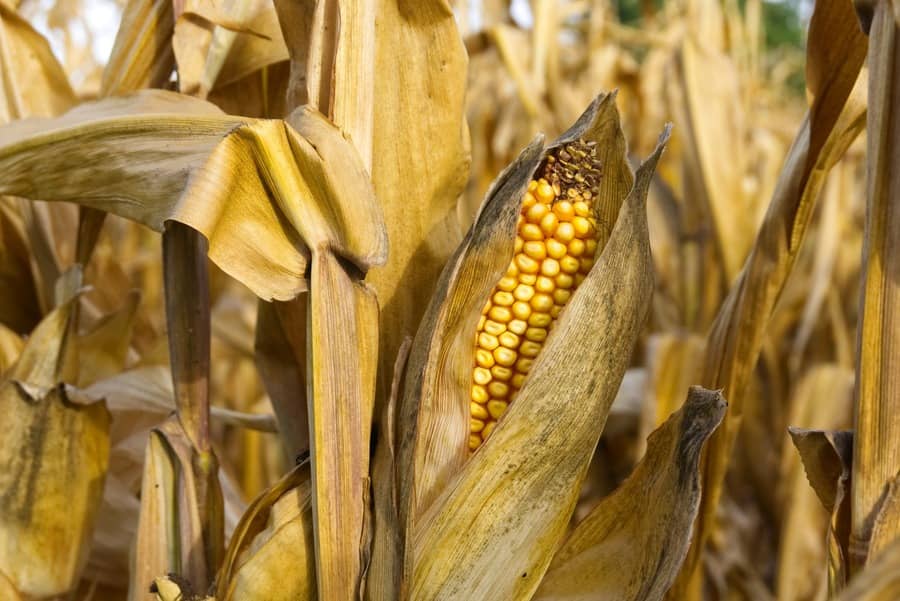Porto Alegre, December 13, 2022 – Market of corn remains tense with climate in RS and Argentina. The week brought the latest supply and demand update for 2022 released by USDA – United States Department of Agriculture. Corrections in Ukraine and Europe, as well as a small increase in US stocks. Numbers that accentuate European import needs in the first half of 2023 in the case of corn. At the same time, USDA preferred to maintain the optimistic projections for the Argentine crop at 55 mln tons, despite the significant delay in its planting and the lack of rainfall.
In fact, despite the recent rains in Rio Grande do Sul and Argentina, the situation is critical given the strong heat wave at the beginning of December and the lack of continuity of rains to ease the situation for this 22/23 crop. Climate monitoring continues to be a priority at this time. Meanwhile, with the Brazilian political transition sub judice, the exchange rate curve continues to be an important variable for the coming few weeks and, even with the transition taking place normally, the fiscal context for 2023 onward is problematic and suggests changes in the economic environment for the exchange rate.
The Brazilian currency is the second one that has been least appreciated for the last thirty days among the main emerging currencies. The Argentine peso, again, was the one the most depreciated, and the real was the currency that did not keep up with the appreciation of others. Even the yuan gained value in December. The environment that is impacting the Brazilian currency is, without a doubt, the political transition, particularly the economic bias toward the country.
The political transition is not completed in Brazil, it is under judgment in the Supreme Military Court, even with the inauguration ceremony of the new President scheduled for this week. In the meantime, the names for the composition of ministries come up, and it is clearly visible the radicalization of the ideological bias for the new government, from the Ministry of Defense to the Ministry of Finance. The new Finance Minister announced, after the closing of the market last week, certainly does not please the market, and derivations of this environment will be priced in Brazilian assets, here and abroad.
This way, it is important to reflect on one of the variables that can sharply affect agribusiness in the next four years. If we look at the appreciation cycle of the real at the beginning of the 2000s, we will notice a synergy with the situation of the extremely weak dollar abroad against all currencies. Therefore, not only the real grew higher, the world was growing intensely, and Brazil benefited from this environment. In 2008, the subprime economic crisis broke with this condition of emerging currencies. Together with this change in the world environment, Brazil did not suit the fiscal and economic environment, underestimated the economic crisis, and continued as if it were an island in the global crisis. It must be noted that, at that time, Brazil’s central bank still did not have independent management, so its trajectory was much more political than technical.
Brazilian economic policy ignored this world environment, continued without budget and revenue control, and allowed for an extreme capital outflow. Owing to the increase in the debt/GDP ratio and the historic hole in the balance of current transactions with foreign countries, the dollar jumped from BRL 1.50 in 2011 to BRL 4.30 in 2016. This internal crisis of lack of control of public accounts overthrew a president and generated a conversion to adjustments that would correct the trajectory of the economy.
In 2018, Brazil entered this context of adjusting the public sector with the reforms that were possible and with spending cuts. Today, the country can grow 3% in 2022 and has an unemployment cut from 14% to 8.3%, a lower debt/GDP rate, extremely comfortable external accounts, controlled inflation, and interest rates adequate for the world scenario. We would be ready for a 3-5% expansion in 2023.
The confirmation of the new Minister of Finance reveals that we will have an administration focused on the model of increasing public spending combined with attempts to increase the tax burden. The exchange rate will price, from now on, attitudes involving the progress of public accounts, decisions on state-owned companies, and excess in the tax environment that affect the ability of the productive sector to keep growing with high interest rates and a high tax burden. Inflation could just be a consequence of this economic management model that is very similar to the Argentine one. The National Congress, after four years of budget restriction, seems inclined to endorse the model. By the way, the proposal for the Budget PEC [Constitutional Amendment Proposal], passed by the Senate with BRL 168 bln for additional spending in the next two years, not only breaks the spending cap, but also changes the understanding of what is the maximum possible spending within the budget. It seems that this will be only the first move to increase spending in a series that must start in January. We may be heading toward a new exchange rate range over the next four years, with the dollar above BRL 6.00.
Despite the dollar’s high having been BRL 5.98, the market has strong resistance at BRL 5.70 due to monthly averages. This week will also be tense abroad, with the US November inflation to be released on the 13th, interest rate hike by the Fed by 0.5% on the 14th, and the interest rates bias for the first meeting of 2023.
Follow the Safras Agency on our website. Also follow us on our Instagram and Twitter and stay on top of the main agribusiness news!
Copyright 2022 – Grupo CMA

